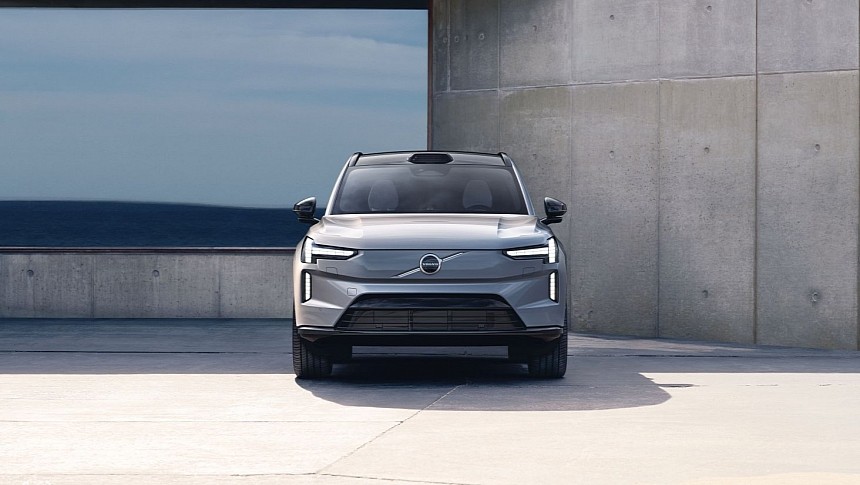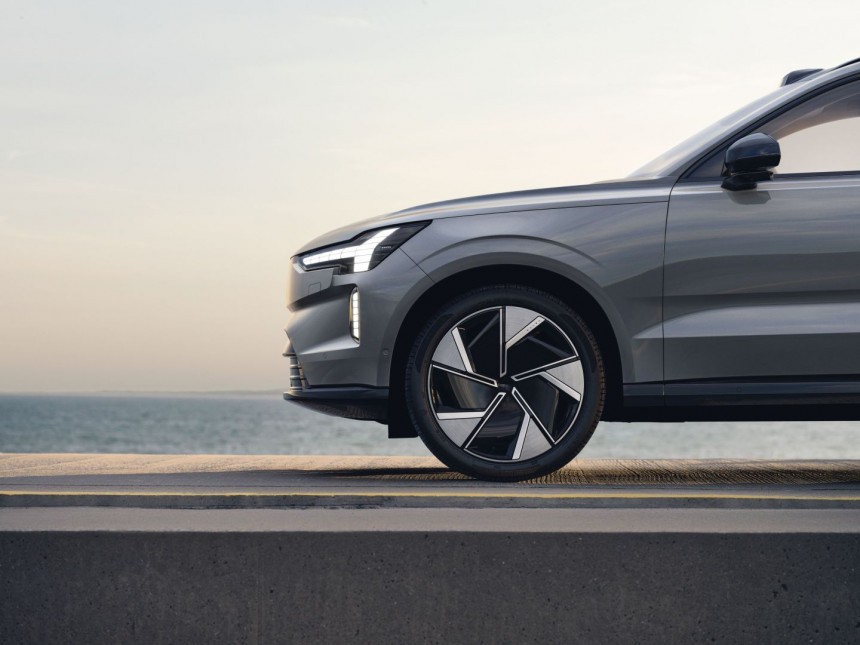The Volvo EX90 has been delayed. Deliveries were scheduled to start this year, but they have been pushed back five or six months, according to the carmaker.
The reason behind the half-a-year delay comes down to the complexity of the software of the LiDAR system that should be integrated into the in-car software. The information has been confirmed by Volvo Cars chief executive Jim Rowan, during the brand’s latest earnings call.
"We wanted to make sure that the first time we put LiDAR into our safety stack, it operates in the way it should," he explained. Engineers are having trouble integrating the safety features into the new SPA2 architecture that the model shares with the Polestar 3.
The equipment is standard on the Volvo EX90, but it is optional on the Polestar 3. The move is part of Volvo’s zero collision vision, and they claim that the new SUV is actually the one starting a new era in safety. So no one blames them for wanting to make things perfect.
The LiDAR sensors are supplied by Luminar Technologies, just like the Sentinel Software, integrated with the in-car software. The system is part of the EX90’s advanced road-monitoring package, together with cameras, radars, and ultrasonic sensors that create - according to the Swedish carmaker, an "invisible shield of safety." The system is capable of detecting pedestrians from up to 820 feet (250 meters) away, even at highway speeds.
According to Rowan, the presence of a LiDAR sensor in a car can reduce accidents with severe outcomes by up to 20 percent, and overall crash avoidance can be improved by up to 9 percent.
The EX90 is the company’s biggest product launch since the XC40 crossover back in 2017.
Volvo is going to build the company’s flagship electric crossover in Ridgeville, South Carolina. Production was originally set to start in late 2023. But the five- or six-month delay would push it straight to the beginning of 2024, as reported by Automotive News.
Deliveries are expected to begin in the third quarter of 2024, and executives are hoping that it will be the best-selling electric Volvo in the US.
Customers can reserve a car on the brand’s website by paying a $500 fully refundable deposit. That’s where they can also spec their future EX90 according to their preferences.
For the money, they get a seven-seat SUV that can drive up to 300 miles before it needs to be plugged in again. Energy is stored in a 111-kWh battery pack.
Two electric motors integrated into an all-wheel drive setup deliver 510 horsepower (516 PS) and 671 lb-ft (919 Nm) of torque. Those would be enough to make the electric car run from 0 to 60 mph (0-97 kph) in 4.7 seconds.
"We wanted to make sure that the first time we put LiDAR into our safety stack, it operates in the way it should," he explained. Engineers are having trouble integrating the safety features into the new SPA2 architecture that the model shares with the Polestar 3.
The equipment is standard on the Volvo EX90, but it is optional on the Polestar 3. The move is part of Volvo’s zero collision vision, and they claim that the new SUV is actually the one starting a new era in safety. So no one blames them for wanting to make things perfect.
According to Rowan, the presence of a LiDAR sensor in a car can reduce accidents with severe outcomes by up to 20 percent, and overall crash avoidance can be improved by up to 9 percent.
The EX90 is the company’s biggest product launch since the XC40 crossover back in 2017.
Volvo is going to build the company’s flagship electric crossover in Ridgeville, South Carolina. Production was originally set to start in late 2023. But the five- or six-month delay would push it straight to the beginning of 2024, as reported by Automotive News.
Deliveries are expected to begin in the third quarter of 2024, and executives are hoping that it will be the best-selling electric Volvo in the US.
Customers can reserve a car on the brand’s website by paying a $500 fully refundable deposit. That’s where they can also spec their future EX90 according to their preferences.
For the money, they get a seven-seat SUV that can drive up to 300 miles before it needs to be plugged in again. Energy is stored in a 111-kWh battery pack.
Two electric motors integrated into an all-wheel drive setup deliver 510 horsepower (516 PS) and 671 lb-ft (919 Nm) of torque. Those would be enough to make the electric car run from 0 to 60 mph (0-97 kph) in 4.7 seconds.














